Customer Profile
Zengaming is a Linkedin equivalent for professional gamers. It supports esports games- CS, Dota, and League of Legends, on its platform and needs gamers to compete with others and build a profile. The idea is that this will create a hiring ground for pro teams and even esports businesses to hire players on the basis of their Zengaming’s profile.
Based out of Israel, the company recently raised $2.8 million in funding.
The Objective
The players who would join Zengaming are already acquainted and most likely addicted to these games so onboarding isn’t really a challenge.
The challenge is to convince gamers to play on the Zengaming platform and build their profile. Retention was their primary challenge.
Now when you think of retention, the first day is very critical. Here is some perspective from Luke Wroblewski- product director at Google. “The reality of mobile apps is harsh. Most people don’t download new apps and once they do, abandonment is high. Given the cost & effort required to get people to download your app, Day 1 retention is a critical metric.”
With mobile apps, losing around 80% of DAU within the first three days is considered normal. (Source) Although, Zengaming is a web-based product, yet one can safely assume that the first day is critical for them too, which is why they built this journey.
Onwards, we will decode the engagement strategy that the folks at Zengaming employed to improve their retention on D1.
The WebEngage Effect
Here is the journey, Zengaming ran to engage users on the first day.
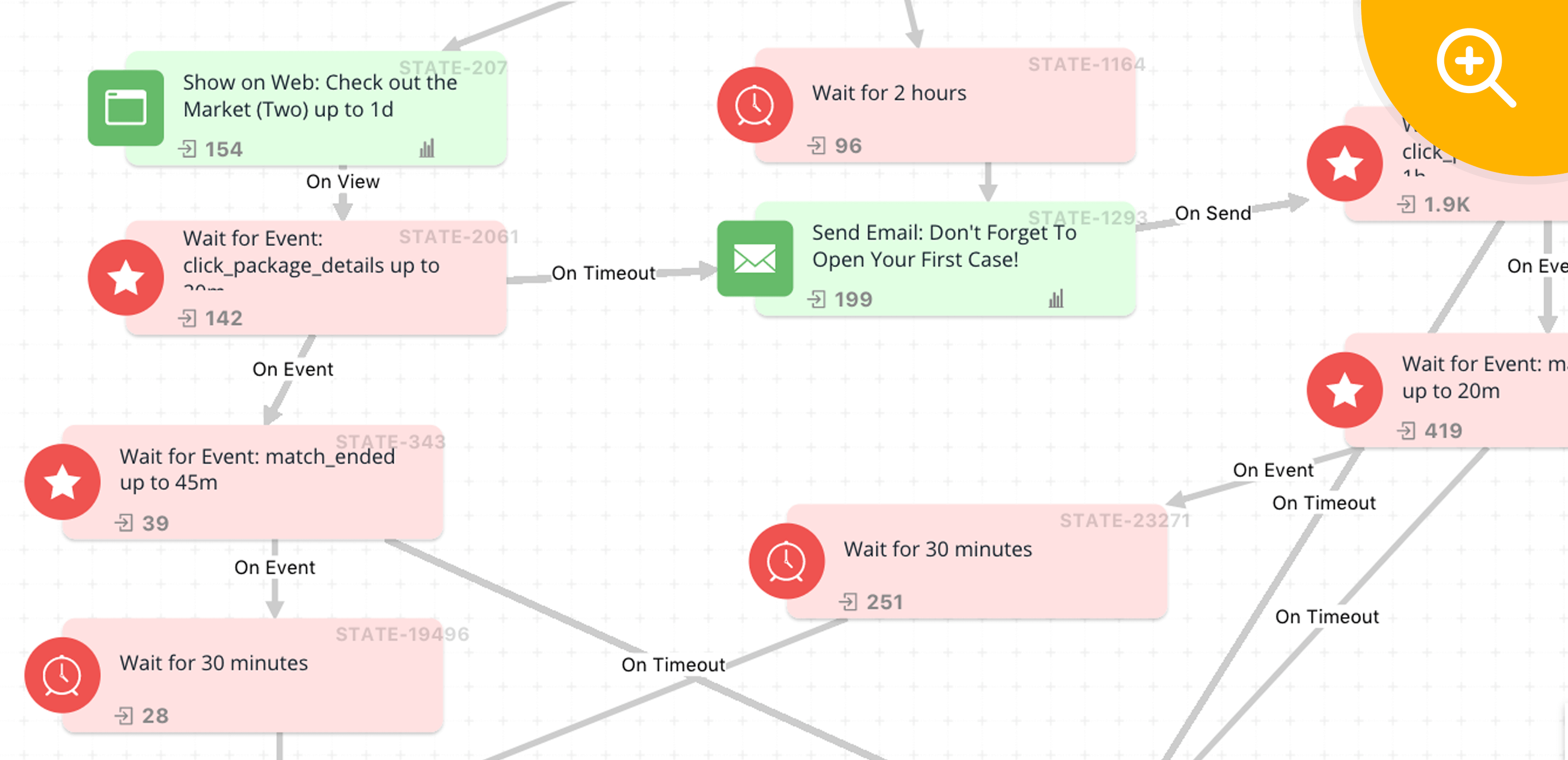
Engagement channels employed in the journey:
- Onsite notification
Zengaming is a web-based product, so the choice of the above two channels is only natural.
Now, when you do retention you typically find the key element that you think would encourage users to increase the product usage. In the case of Zengaming, that element is ‘cases’.
For those who are not gamers, cases are essentially the weapons, or rewards that can be unlocked by players with their Zencoins.
Zencoins, on the other hand, are basically the reward points – the product of engagement.
As in, the higher the engagement (in this context the number of matches you play), the more the Zencoins you accumulate. This is why, at various points, the journey is first pushing users to check the cases and then checking the ‘match played’ event.
We would now see how the journey tries to achieve its goal by analyzing the triggers of each message, one channel at a time.
Onsite notification
The journey is sending an email whenever there is a timeout and a notification when the user is live- prudent use of the two channels, without over notifying users to the point of annoying them.
Onsite notifications are generally thought to be intrusive for the obvious reasons. But if used contextually they can effectively guide the user journey and translate into a positive experience. Case in point Zengaming.
The first notification is sent when the user registers and is ready for the first match.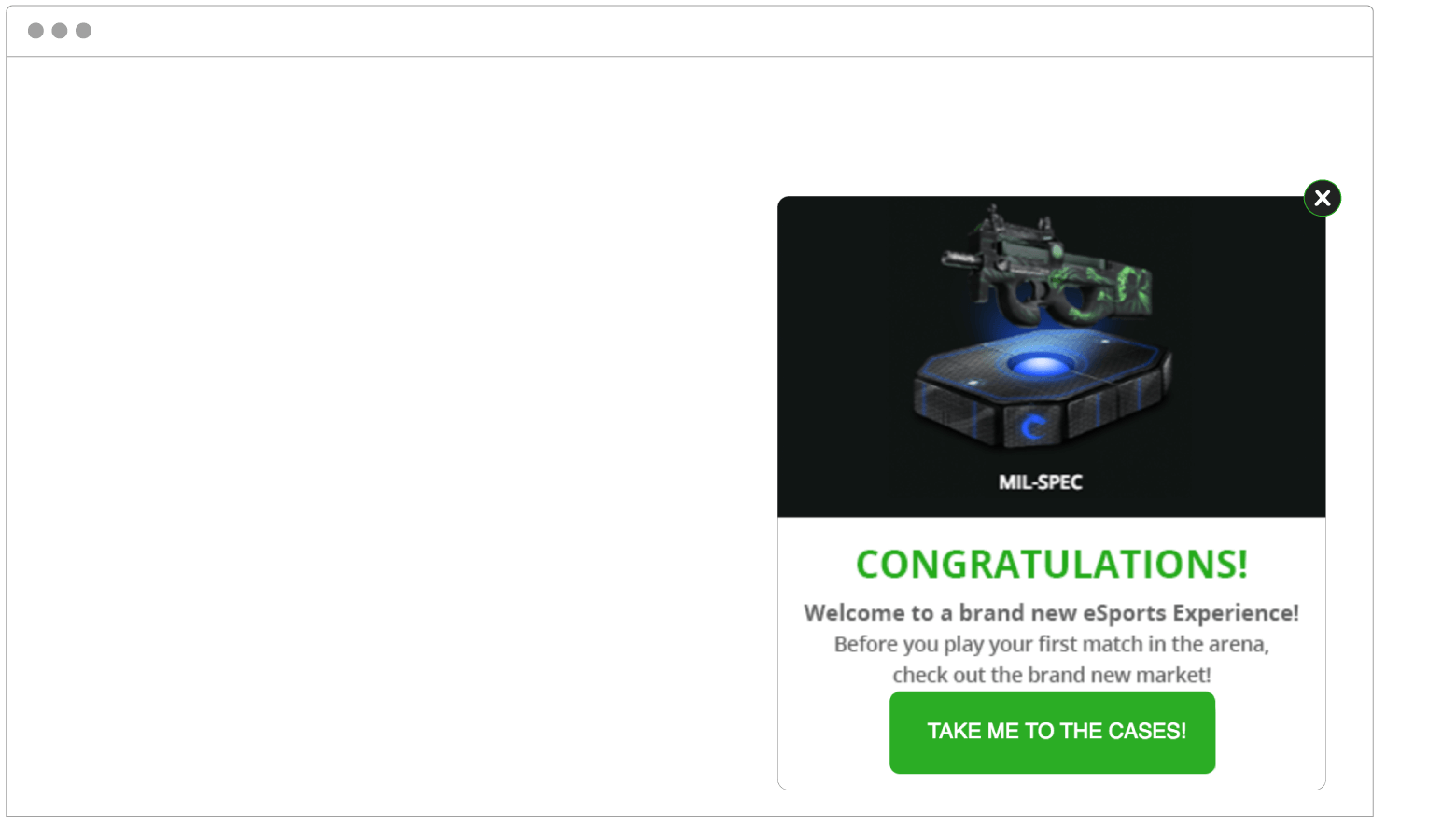
The second notification is sent when the user completes the first match
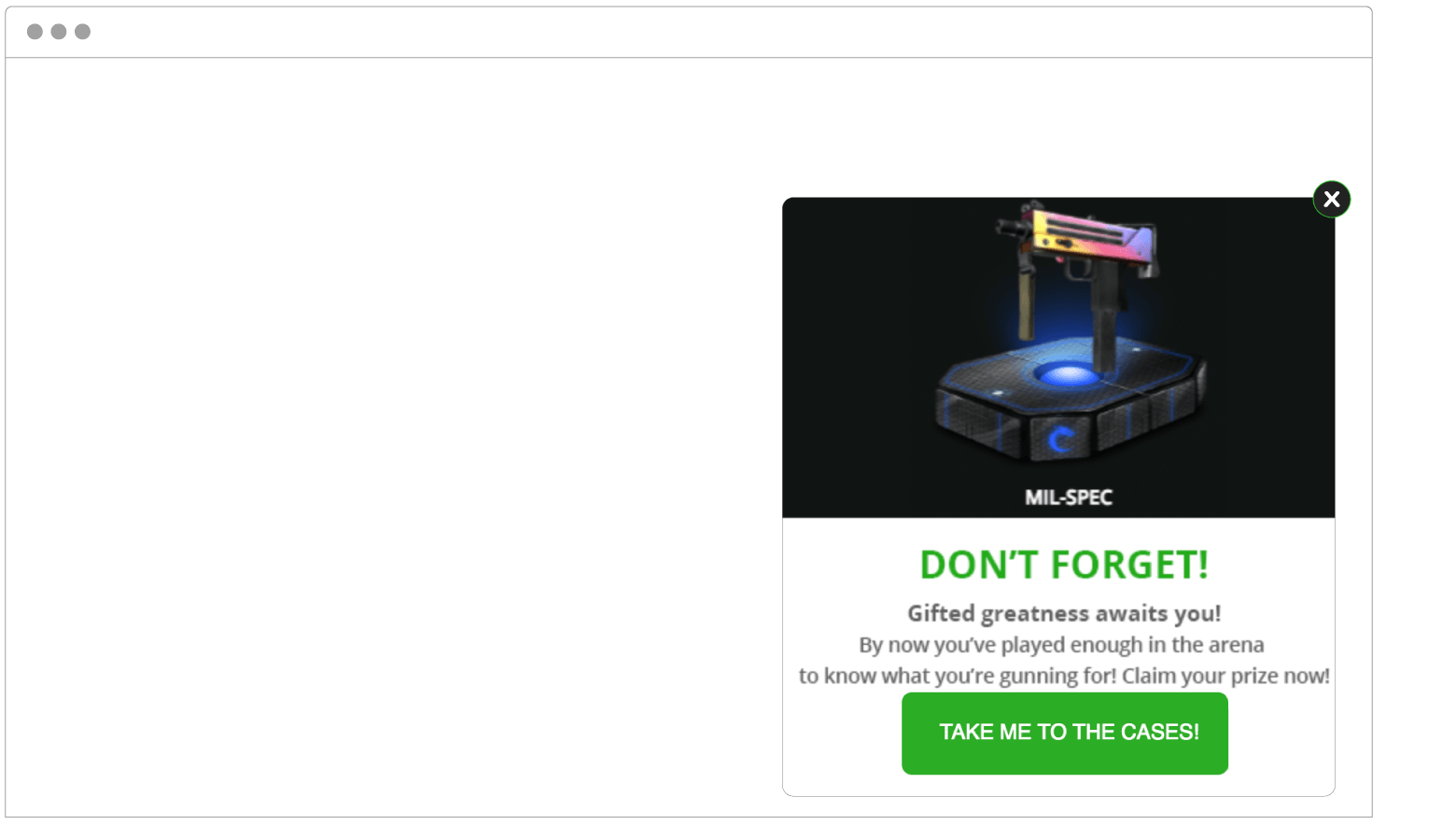
The third notification is sent when the user has completed 7 or more matches but hasn’t opened a case yet.
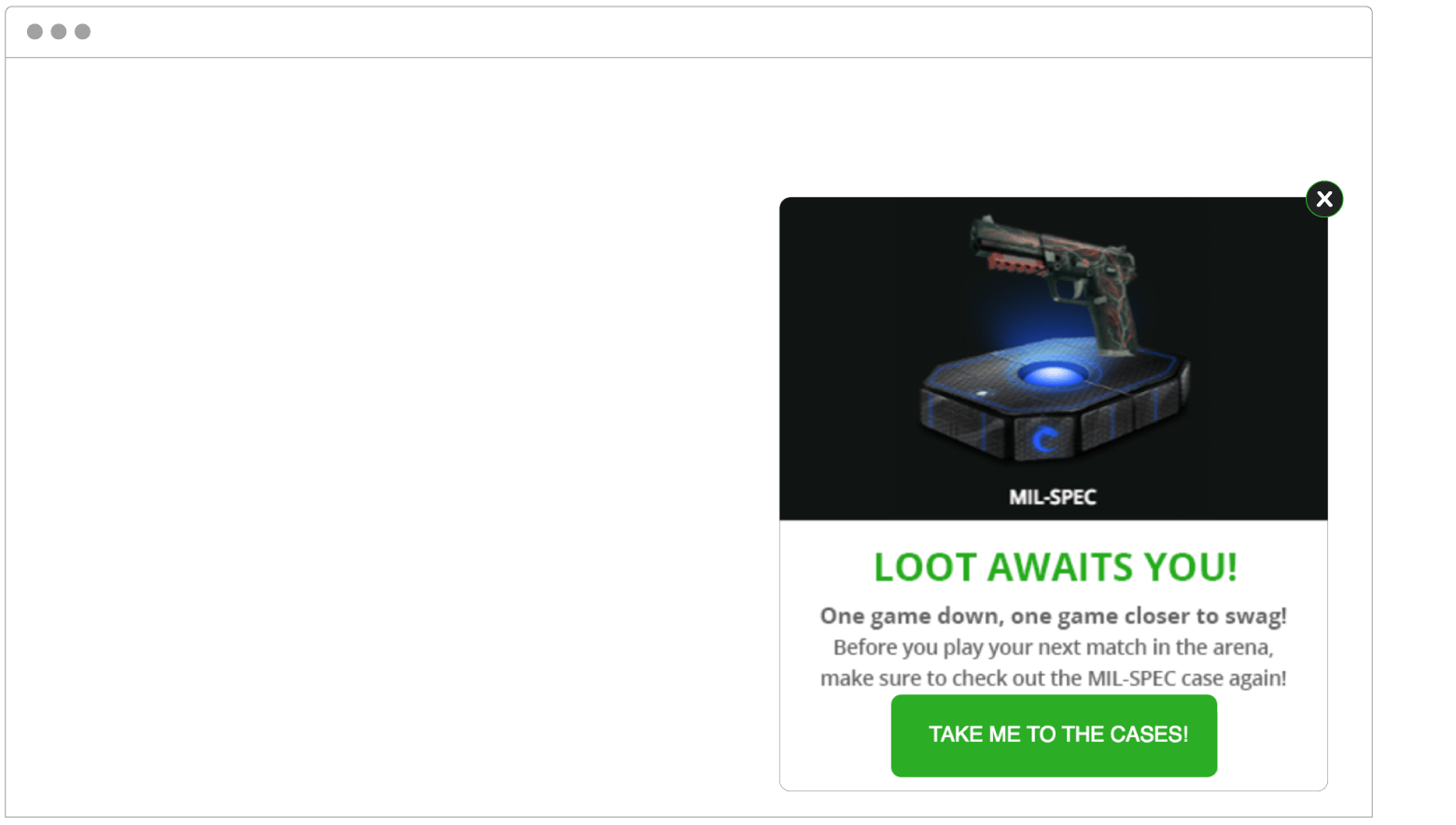
Email
When the user progresses along the desired path, he is still on the site, so the journey prompts an onsite notification to guide him deeper.
However, if he deviates from the flow then the journey triggers an email. This aims to achieve the same objective- make user check ‘cases’.
The email is sent at different points in the journey as and when the user qualifies for it.
Like, after registering, if the user doesn’t click on notification 1 then the following email is sent:
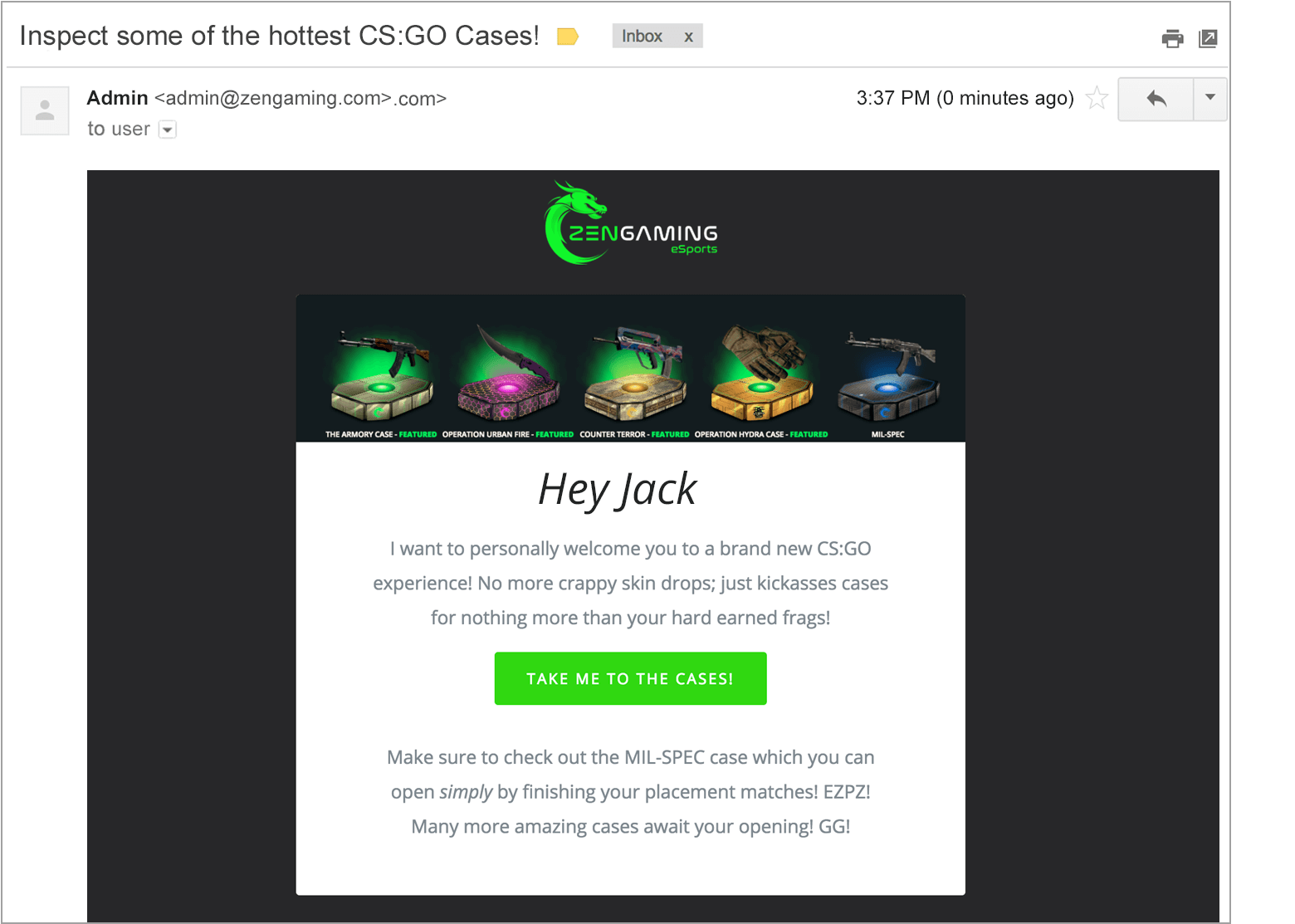
Alternately, if the user doesn’t complete the match even after clicking on the notification and checking the cases.
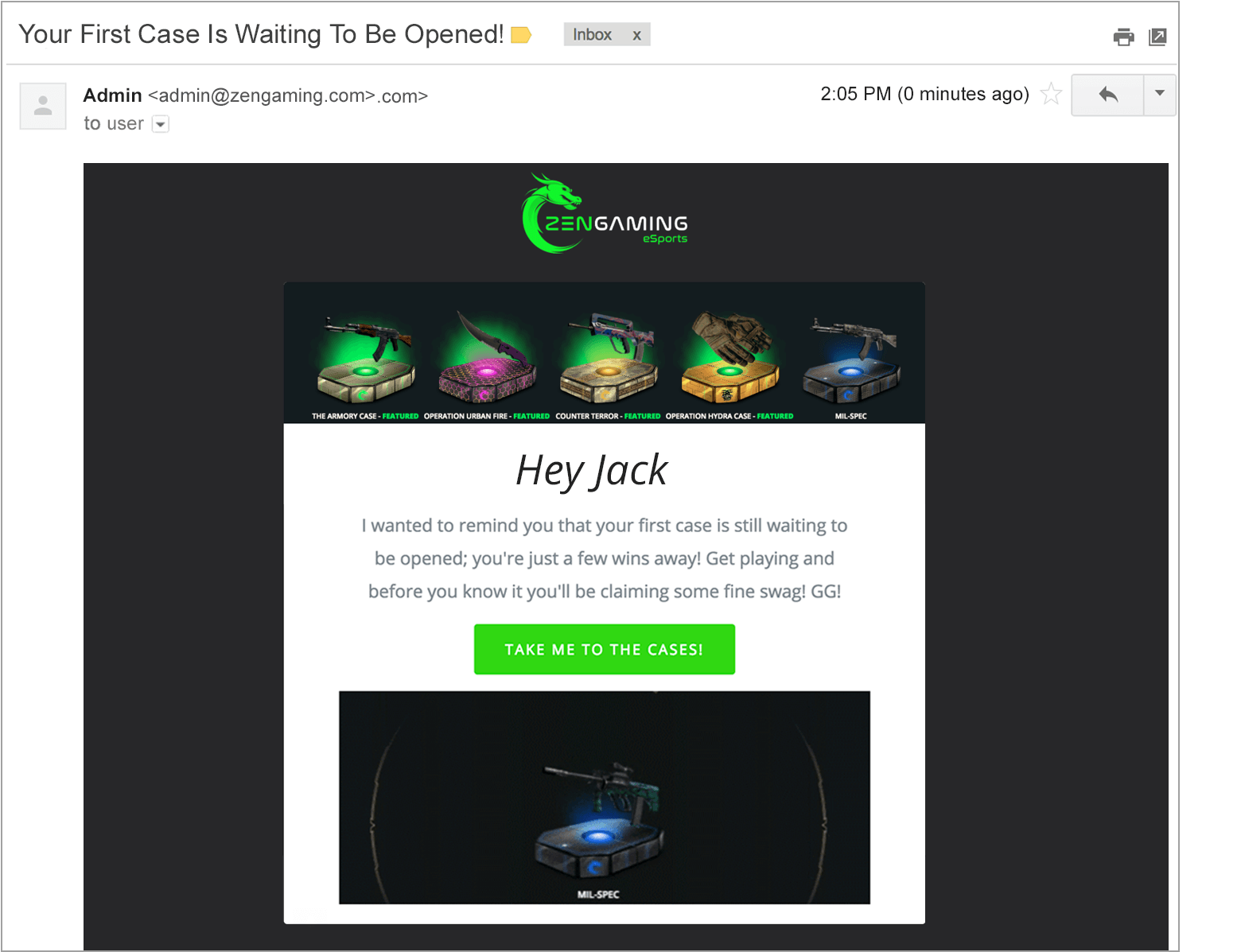
However, if the user doesn’t respond at all right from the first notification then the following email is sent.
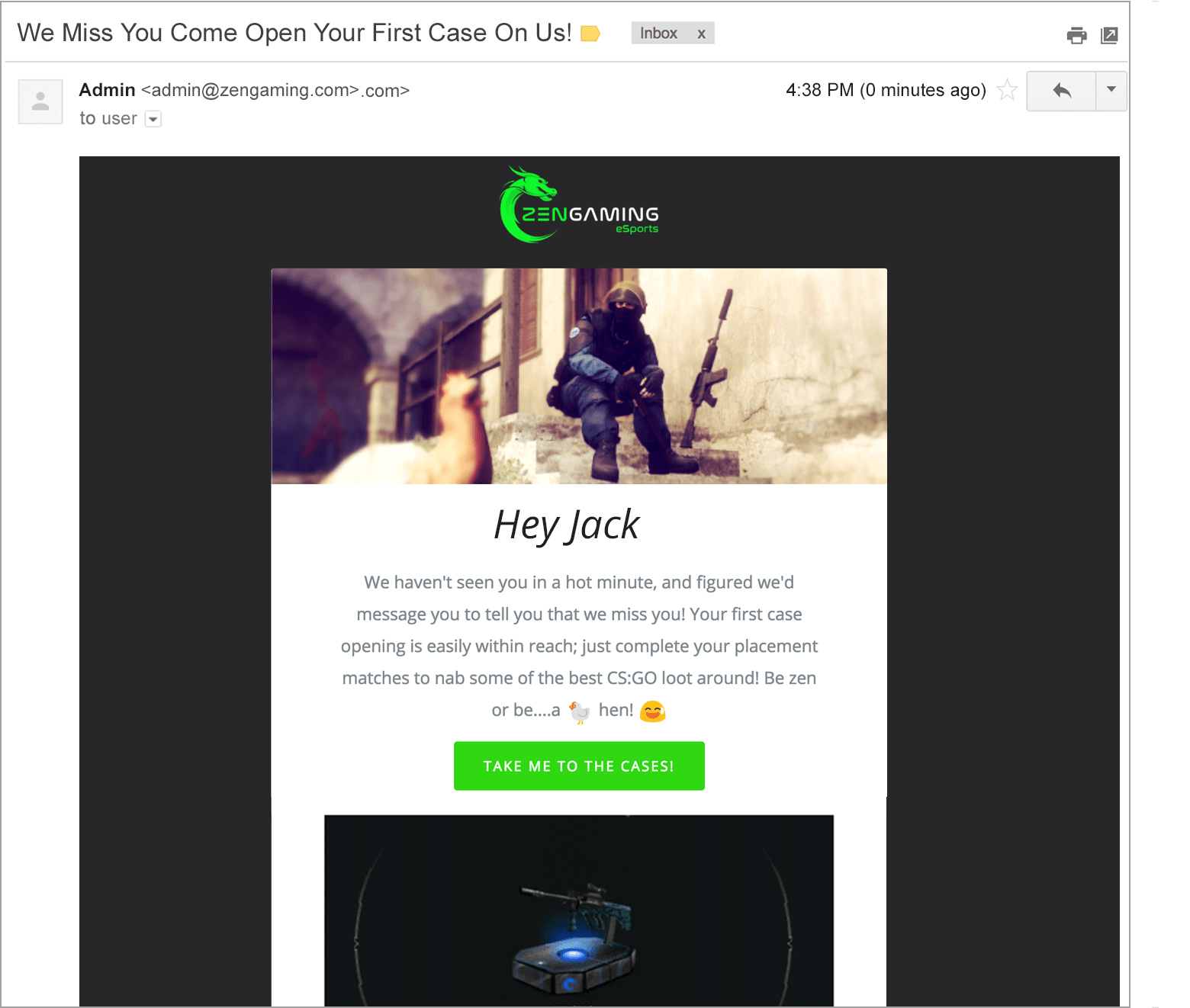
If the user has played 7 or more matches, has still not opened a case, and doesn’t respond to the notification either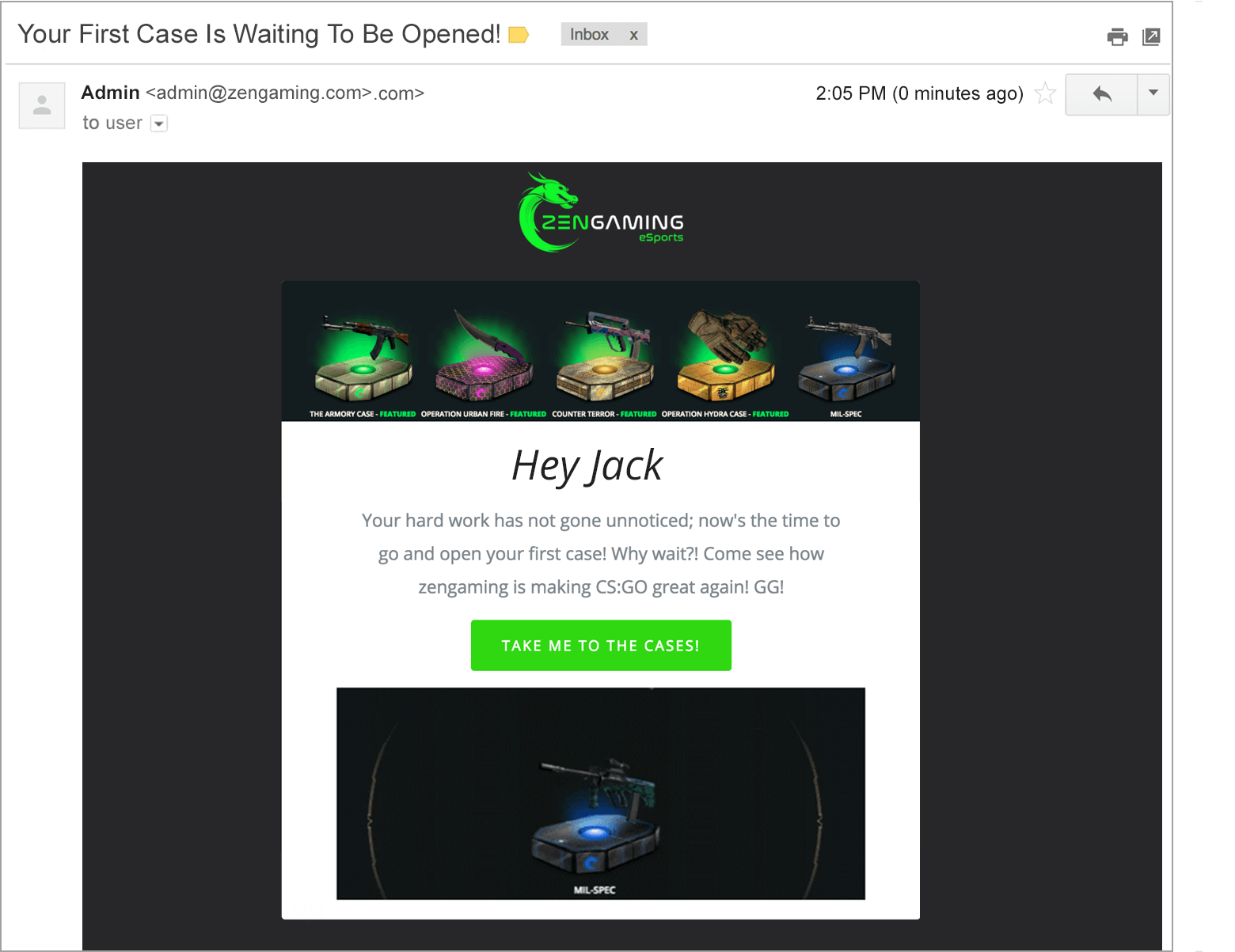
The flow is not linear like one would imagine. One needs to sit down and spend a good amount of time understanding the condition, delays, and personalization that has been employed for each message.
The Result
Zengaming’s first-day retention increased from 77.3% to 97.1%, which is nearly a 26% uplift. The spur in D1 also translated into an overall increase in retention.
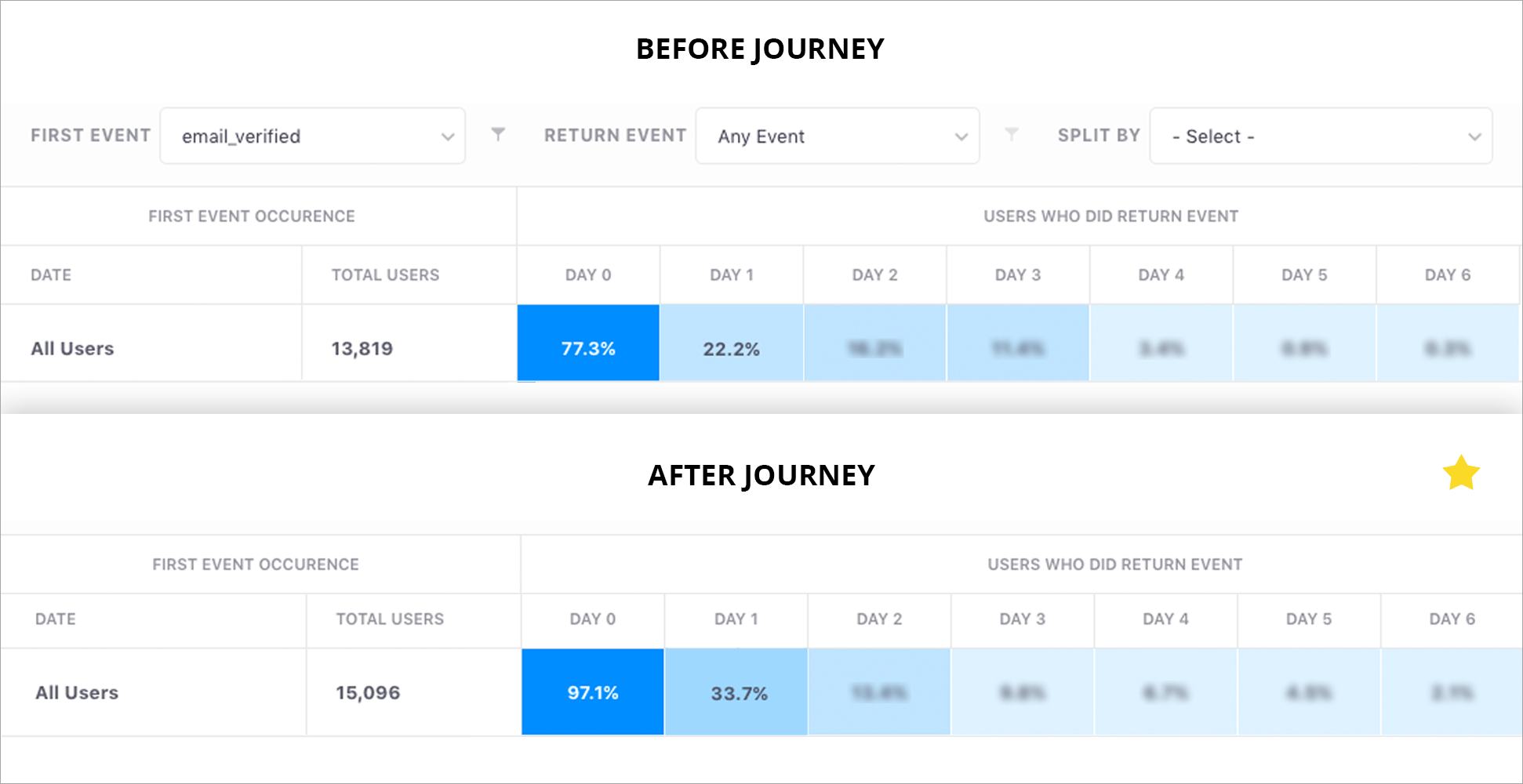
The second benefit was contextual engagement.
Though you would see several engagement blocks in the journey, each one of them is preceded by a relevant condition. So, an average user would be prompted with only one or two messages depending on how he interacts with Zengaming.
Esports vertical was a stranger to WebEngage for a long long time. Zengaming was one of the first customers we had and we would be soon up with another case-study of our success in this domain.
Let’s Start Together – Lead Your Growth By Customer Retention, Not By Acquisition









